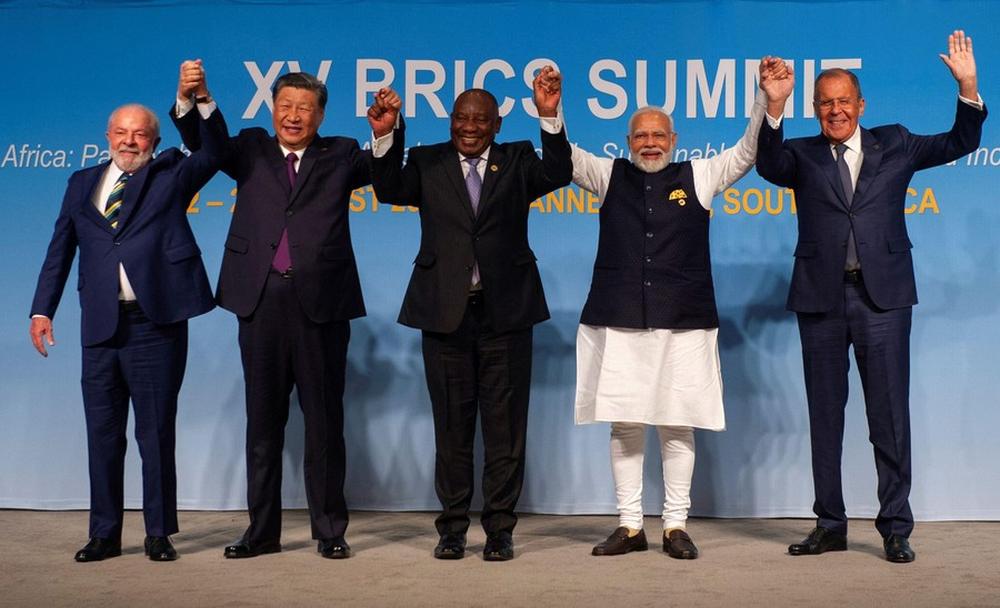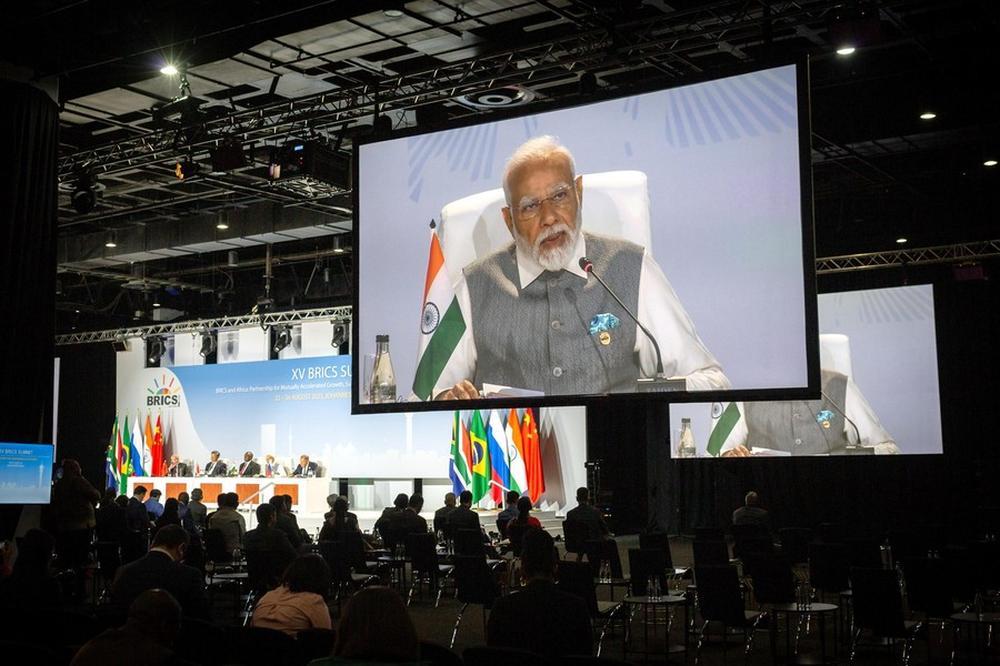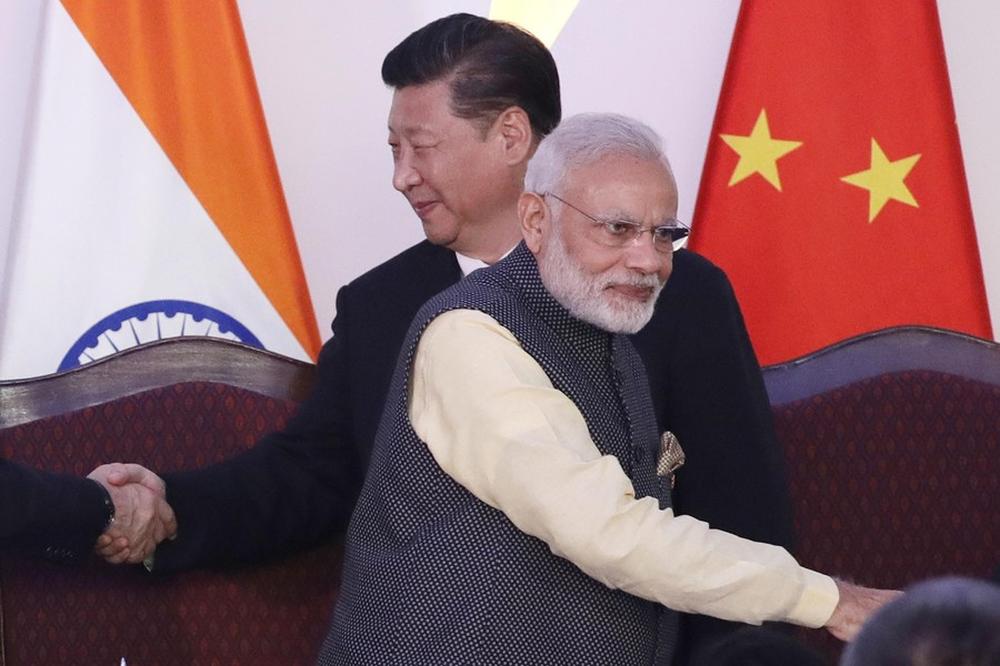- #Global Issues
- #Multilateral Relations

► Ever since BRICS’ actual ability to become a prominent actor as a counterweight to existing international organizations was questioned, whether the bloc should deepen its industrialization or proceed to expand its representativeness in the international system was raised.
► Two prominent issues were covered in the XV BRICS Summit: 1) the creation of a common currency to replace the U.S. dollar as the dominant currency and 2) the expansion of the bloc to a broader platform. Here, the second issue advanced significantly, with the inclusión of six new members.
► BRICS present heterogeneities and asymmetries for consensus-building in the future just like the original groups. In this context, the potential inclusion of LAC countries implies both opportunities and risks through a combination of economic, political, and geopolitical factors.
► Latin American countries should develop the strategy of active non-alignment to maintain balance in an international environment full of uncertainty.
Formally created in 2009 and expanded with the inclusion of South Africa in 2010, the BRICS (Brazil, Russia, India, China, and South Africa) became a forum for emerging economies aspiring to promote cooperation and eventually play a more active role in reforming and reshaping global economic governance. As an informal multilateral mechanism from its inception, BRICS aimed to give a voice to nations of the Global South contesting the hegemony of the more industrialized and wealthier nations of the West.
The confrontation between major powers and emerging blocs following the COVID-19 pandemic, the economic sanctions imposed by the West on Russia, and the return of geopolitics, contributed to revitalizing the group from 2019 onwards and to increasing its politicization.
The XV BRICS Summit held in Johannesburg sparked a wide range of expectations regarding its growing weight in the international system. Some of these expectations were highly critical, questioning its role as a counterweight to existing international organizations and its actual ability to become a prominent actor, particularly as it was perceived—especially in Western mainstream media—as an "anti-Western alliance led by Beijing and Moscow" that contributes to the construction of a Sino-centric global order. Alongside these criticisms, China's predominant role as the most powerful economy in the group and Russia's "special military operation" in Ukraine raised a wide range of questions about a bloc perceived as being organized around their interests whose potential expansion could threaten Western nations. Others, widely favorable in terms of the emergence of a mechanism capable of balancing or reforming global governance in favor of the Global South and emerging economies, aimed to highlight the role of the group as a fundamental and growing actor in a multipolar reconfiguration of the international system.
Beyond these criticisms and perceptions, before the Summit, a series of questions were raised about whether the bloc should deepen its institutionalization building on some previous achievements such as the creation of the New Development Bank in 2014, or whether it should proceed to expand— as BRICS+—to increase its weight, representativeness, and legitimacy in the international system.
The Summit's agenda foresaw two prominent issues to address. On one hand, particularly due to movements in favor of using national currencies in trade and financial exchanges among group members and other nations of the Global South, the creation of a common currency to replace the U.S. dollar as the dominant currency appeared as a key issue to be addressed. On the other hand, the expansion of the bloc to a broader platform takes into account the numerous requests for entry from countries in the Global South. Additionally, two topics that were expected to be present were related to the group's projection in Africa and positions regarding the war in Ukraine and its resolution, as China, Brazil and a group of African countries had previously launched initiatives to promote conversations for peace.
After several international organizations pointed out that BRICS had become the largest GDP bloc of the world compared to the G7, and that most members of the bloc largely ignored Western economic sanctions against Russia, the issue of creating a common currency, promoted by Brazil, did not advance as expected. Instead, the need to strengthen exchanges in national currencies before creating a common currency that could replace the dollar was reiterated.
However, the second issue - the expansion of the bloc -advanced significantly, and the inclusion of six new members—Argentina, Egypt, Ethiopia, Saudi Arabia, the United Arab Emirates, and Iran—into a BRICS+ was approved. Both this and other debates highlighted the differences between the positions of China and Russia in their aspiration to make the group an instrument of their global projection; of India and Brazil, more focused on their development interests; and South Africa, which aspired also to strengthen its regional leadership.
Certainly, this expansion gives more weight to the bloc in the international system, among other reasons, because it assumes the role of spokesperson for the Global South in the face of the Western North and seeks to expand to Africa, Asia, and Latin America. Despite the ambiguity of the concept of the Global South, this marks the rise of a group of nations with growing prominence and global influence that aspire to play a more active role in shaping the international system notwithstanding their disparities and asymmetries.
The geographical balance of the new additions to BRICS clearly illustrates this intention. However, just like the original group and the currently expanded BRICS+, they present heterogeneities and asymmetries that will likely pose challenges for consensus-building in the future.
Beyond the marginalization, it experiences in the international system and the great heterogeneity of the region, the potential inclusion of Latin American or Caribbean countries in BRICS implies a series of opportunities and risks.
In terms of opportunities, participation in the bloc expands the range of trade and investment options with other members and access to NDB (New Development Bank) credits. It may also increase the capacity for collective negotiation in multilateral organizations like the G20, the IMF, and the World Bank. Nevertheless, it also faces the risk of alienating its ties with the West and being perceived as associates or allies of countries like China, Russia, and Iran.
This dilemma between economic benefits and geopolitical risks is clearly illustrated by the case of Argentina.
With the support of Brazil - one of its largest trading partners -, Argentina was accepted to join BRICS and will become a full member on January 1, 2024. Alongside Brazil, China and India are among Argentina's top five trading partners, and its inclusion will likely enhance these relationships and open up the possibility of broader and more diversified international links. However, the economic benefits could be overshadowed by political and geopolitical risks. Firstly, while membership in BRICS and the SCO (Shanghai Cooperation Organization) may have helped ease tensions between India and China, Argentina and Iran have a pending issue due to terrorist attacks on Argentine soil for which Buenos Aires holds some high-ranking Iranians responsible. Additionally, two of the leading Argentine right-wing candidates in the upcoming presidential elections have categorically rejected this inclusion.
The underlying problem lies in the persistence among Argentine political elites of limited and outdated cognitive maps and narratives clinging to contrasting views between a hyper-Westernism that forces them to align with the United States and the EU, and a Sinophilia that brings them closer to China.
The benefits and risks posed by this combination of economic, political, and geopolitical factors in Argentina, can be extended, with nuances, to other countries in the region. Nevertheless, Argentina could serve as a spearhead for the inclusion of other South American countries like Uruguay, Bolivia, and Venezuela, as well as Cuba, Honduras, and Nicaragua. However, this decision may also be influenced by respective geopolitical alignments. Mexico, due to its close ties with the United States and Canada—has shown ambiguity, if not clear opposition, to the possibility of seeking entry into the group.
In this context, the strategy of active non-alignment promoted by some Latin American analysts and diplomats can be useful for maintaining balance in an uncertain and changing international environment.


